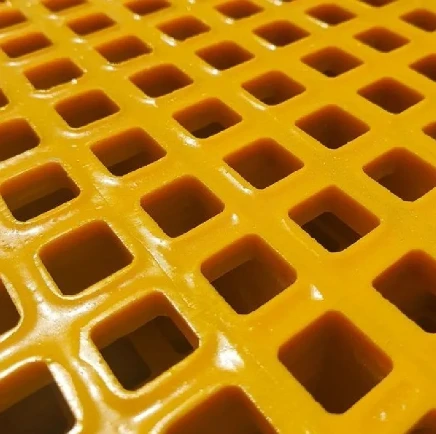loading...
- No. 9, Xingyuan South Street, Dongwaihuan Road, Zaoqiang County, Hengshui, Hebei, China
- admin@zjcomposites.com
- +86 15097380338
- Welcome to visit our website!
Exploring the Features and Benefits of FRP Mini Mesh Technology
Exploring FRP Mini Mesh A Breakthrough in Lightweight and Durable Materials
In recent years, the demand for materials that are both lightweight and durable has surged across various industries. One such innovative solution that has emerged is Fiber Reinforced Polymer (FRP) mini mesh. This material offers a combination of strength, resilience, and lightweight properties, making it an ideal choice for a multitude of applications, from construction to aerospace engineering.
Understanding FRP Mini Mesh
FRP mini mesh is essentially a composite material that combines high-strength fibers, such as glass or carbon, with a polymer matrix. This combination results in a material that not only retains the desirable properties of its components but also exhibits enhanced performance characteristics. Mini mesh refers to the structure of the material, which is formed by interlocking filaments arranged in a grid pattern. This design provides additional reinforcement, allowing for a lower amount of material to be used while still maintaining structural integrity.
One of the standout features of FRP mini mesh is its lightweight nature. Traditional materials like steel and concrete can be cumbersome, leading to increased transportation costs and challenges in handling during installation. Conversely, FRP mini mesh is significantly lighter, meaning that it is easier to transport and manipulate on site. This weight reduction can lead to lower overall project costs and expedited construction timelines.
Applications of FRP Mini Mesh
The versatility of FRP mini mesh makes it suitable for various applications. In the construction industry, it can be used to reinforce concrete structures, offering a lightweight alternative to traditional steel reinforcement bars (rebars). The use of FRP mini mesh in concrete can enhance the lifespan of buildings and infrastructure by providing better resistance to corrosion, which is a significant advantage in harsh environments.
In the aerospace sector, FRP mini mesh is increasingly being utilized in the fabrication of lightweight components that must endure high stresses without adding excessive weight to the structure. Here, the material’s strength-to-weight ratio plays a crucial role, contributing to fuel efficiency and overall performance.
frp mini mesh

Another promising area for FRP mini mesh is in the development of prosthetics and medical devices. The material’s ability to be customized in terms of shape and rigidity allows for the creation of lightweight yet strong prosthetic limbs and supports, improving the quality of life for patients.
Environmental Benefits
Beyond its practical applications, FRP mini mesh also offers environmental advantages. Traditional materials often require heavy energy inputs for production and generate significant waste. In contrast, many FRP products can be manufactured with a lower carbon footprint, and their long-lasting durability means they need to be replaced less frequently. Furthermore, some FRP materials are designed to be recyclable, offering an added benefit in terms of sustainability.
Challenges and Future Perspectives
Despite its many advantages, the adoption of FRP mini mesh is not without challenges. Cost can be a significant barrier, as the initial investment for FRP materials may be higher than that of conventional materials. However, when considering the long-term benefits such as lower maintenance costs and increased durability, the initial expense can often be justified.
Looking forward, ongoing research and development in the field of composite materials are likely to enhance the capabilities of FRP mini mesh. Innovations such as improved fiber materials and advanced manufacturing techniques may lower costs and expand the range of applications for this material. As industries continue to seek sustainable and high-performance solutions, the future of FRP mini mesh appears promising.
Conclusion
FRP mini mesh represents a significant advancement in material science, offering a lightweight, durable, and versatile solution that meets the demands of modern engineering. As more sectors recognize the benefits of this innovative composite, we are likely to see an increased prevalence of FRP mini mesh in diverse applications, helping to shape a more efficient and sustainable future. This material’s unique properties not only contribute to enhanced performance and longevity but also align with the broader goals of reducing environmental impact—making FRP mini mesh an integral component of tomorrow’s engineering landscape.
-
Transform Your Spaces with FRP Grating SolutionsNewsNov.04,2024
-
The Versatility and Strength of FRP RodsNewsNov.04,2024
-
The Excellence of Fiberglass Water TanksNewsNov.04,2024
-
The Benefits of FRP Grating for Your ProjectsNewsNov.04,2024
-
Elevate Your Efficiency with FRP Pressure VesselsNewsNov.04,2024
-
Welcome to the World of FRP Pressure VesselsNewsOct.12,2024
-
Unveiling the Future of Filtration: Why FRP Filter Vessels are a Game ChangerNewsOct.12,2024
